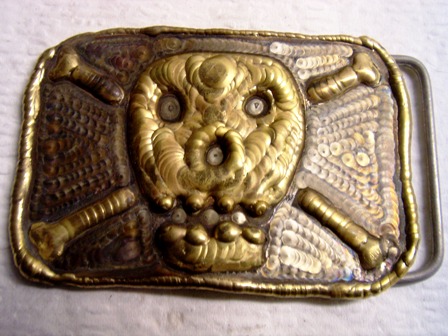How to Tig Weld Brass
A Tig weld brass repair job..
Welding is not always sticking 2 pieces together like in the text books.
Sometimes it involves just putting back some metal that is gone due to wear or corrosion.
In my opinion, with a few exceptions, you can pigeon hole most Welding tasks into one of 3 categories…
1. Welding stuff together like when you are fabricating something, running pipe, or welding some new component in like a muffler…
2. Crack repair like…you know, when something is cracked
3. Dimensional restoration…what? That’s a fancy term for putting back metal that is worn or just gone.
Welding stuff together is a lot more fun than the other 2 but sometimes the other ones are the only work available…and sometimes, it means keeping a customer happy who gives you lots of gravy work too.
This tig weld brass repair is on a couple of brass plates that got chewed up by an axle when a bearing seat crapped out.
These brass plates are pretty expensive because there is a lot of machining time required to drill holes and mill O ring grooves…so instead of making new ones, we just add some weld metal and machine the holes back to original specs.
When you Tig weld brass, it can give you nightmares. Especially if you breathe the fumes…so don’t.
Either wear a respirator, or better yet use some kind of fume extractor to get the zinc fumes out of your breathing zone. ( this is really a good idea with any kind of welding)
as a side note***I have been thinking about a way to build a cheap fume collector that blows the fumes outside the shop, or I may just have to break down and buy one.
The reason tig welding brass is difficult is because of the zinc. Zinc has a really low melting point.
Combine that with the fact that brass is very thermally conductive and requires quite a bit of heat input to weld, and you have an arc that tries to vaporize the zinc. When the zinc boils, it likes to jump on your electrode and you have to stop , grind the tungsten, and start again.
How to Tig Weld Brass on AC??
Why? Easy, Alternating current works better… for me, anyway.
The best technique I have tried so far for tig welding brass is using an inverter with about 30 pulses per second %t set on about 50 and background set on 50.
Then I use just enough heat to get a puddle going .
I pulse the pedal quickly while I add rod and then get off the pedal and get the arc back over the puddle .
I don’t want to overheat the base metal because that is where the zinc is.
Remember , my filler metal is aluminum bronze and it doesn’t have any zinc…so with AC, I get a cleaner puddle with less outgassing than I get with DCEN.
Again this works better for me. I read about others using DC with silicon bronze, but for the type of brass that I have been welding ( and yes there are numerous grades of brass) this has been working ok for welds that get machined off.
The welds are not very pretty , but luckily, the brass weld repairs that I have been doing lately all get machined off. My machinist friend tells be the final product looks like new.
That’s a relief, because the welds sure don’t look that great when I am done. I am super glad they get machined off.
While we are on the subject of aluminum bronze filler metal, did you know that you can weld some really cool looking art using aluminum bronze or even silicon bronze filler?

Heres is how…
• Set the tig machine to AC
• Set the balance for max penetration if you have AC balance…if not don’t worry about it
• Use an oversize gas lens cup if you have one. If not just don’t let it get too hot.
• Use just enough amperage to flow the puddle.
• If you lose the sheen, you are too hot.
• Force cool often with air nozzle or even a bucket of water…just make sure its bone dry before you light back up.















